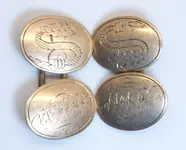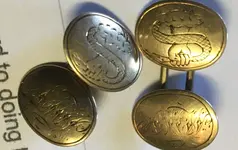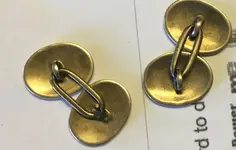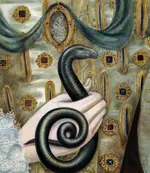testing123
Bronze Member
- Joined
- Mar 29, 2009
- Messages
- 2,359
- Reaction score
- 1,986
- Golden Thread
- 0
- Location
- United States
- Detector(s) used
- CTX 3030, TDI SL
Bought, not a metal detector find.
I'm a bit confused by these. The older cufflinks (1700s) seem to have the single oval connector link, but oval cufflinks seems very rare during that timeframe- many seem to be round or octagon. Also, the seller mentioned they were 10k, which if that checks out (it'll be quite sometime until I can check), I don't think would make it super old, no? But then there's the design which looks to have some age to it.
Can anyone estimate how old these actually are? Thanks for any help!
I'm a bit confused by these. The older cufflinks (1700s) seem to have the single oval connector link, but oval cufflinks seems very rare during that timeframe- many seem to be round or octagon. Also, the seller mentioned they were 10k, which if that checks out (it'll be quite sometime until I can check), I don't think would make it super old, no? But then there's the design which looks to have some age to it.
Can anyone estimate how old these actually are? Thanks for any help!
Attachments
Upvote
10








